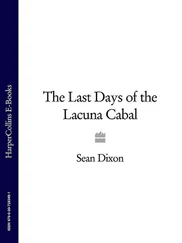Events in Poland obliged Catherine to cast her eye towards France with new urgency. Not long after Louis XVI’s abortive flight to Varennes in June 1791, she made a secret loan of 500,000 roubles ‘for use in French affairs’. 44Yet much as she might urge Sweden, Prussia and Austria to intervene against the Revolution, her aim was always to embroil them while retaining a free hand (not until 1798 did Russia join the anti-French coalition, with disastrous results for Tsar Paul). As the leading French émigré Count Valentin Esterhazy discovered, Catherine’s methods were at once more subtle and less risky. Soon after arriving in St Petersburg at the end of August, the count was entertained to dinner by Alexander Stroganov, an old acquaintance from Paris:
There were thirty of us. I ate several Russian dishes, sterlet soup, mushroom paté and other nourishing ragouts which are good when they are prepared by good cooks, excepting, however, an iced soup which was detestable and a drink whose name I have forgotten, made with flour, which was no better. 45
Yet even Stroganov’s hospitality paled into insignificance alongside Catherine’s determination to woo the émigrés. ‘I work on the feelings of everyone of that ilk who falls into my hands,’ she admitted to Grimm. ‘I do not know in what state they return, but I cover them with fur as far as I can, and I tell them to seek their plans and their measures in the conduct of Henri IV.’ Catherine knew full well that Louis XVI was no Henri IV. Still, treating Esterhazy ‘entirely without ceremony’, she thought he seemed ‘fairly pleased’ with her. In fact, he was bowled over. After Catherine had shown off her paintings during the interval at his first ‘small Hermitage’, the astonished count told his wife that it was the sort of tour he might have taken ‘at the country estate of a private individual who was kind enough to show me round his house’. 46Formal occasions were stunning in a different way. ‘The empress was in white,’ Esterhazy reported after chapel one Sunday, ‘with a sky-blue, sleeveless Russian robe and a broad, blue sash, tied in front of her skirt. She wore gauze on her head and a pendant with two enormous diamonds, diamond clusters in each ear and a pretty bracelet.’ On the twenty-ninth anniversary of Catherine’s coronation, he kissed her hand and dined at the house of Count Osterman, the vice chancellor, with a hundred others at the Court’s expense. That night, more than a thousand carriages were ranged across the square for the dress ball at the Winter Palace. 47
Behind the façade, Catherine was deeply troubled. Although the summer had brought good news from the Danube, where the Turks, weakened by the fall of Ismail, had sued for peace in the wake of defeats inflicted by Prince Nikolay Repnin, the preliminary treaty agreed at Jassy on 1 August was unsatisfactory. Despite securing the swathe of land between the Bug and the Dnieper, including Ochakov, Repnin had conceded the Turkish demand that the conquered territory should remain unfortified, and also agreed to an eight-month armistice which Potëmkin regarded as no more than a ruse to postpone the final treaty, thereby hampering Russia intervention in Poland. 48Worse was to come when the prince contracted a fatal fever while trying to negotiate a better settlement. News of his illness reached the empress at the end of August and fluctuating reports of his health left her increasingly agitated. ‘My true friend Prince Grigory Aleksandrovich,’ she wrote on 16 September. ‘I have received your letters of 29 August and 6 September. The first greatly cheered me, since I could see you were better, whereas the second only made me more anxious, seeing that for four days you had an uninterrupted fever and a headache. I beg God to give you strength…I, thank God, am well, and the colic has completely gone, which I put down to the girdle and the Hungarian wine you recommended.’ At the end of the month, she sent him a little fur coat and a homily: ‘For Christ’s sake, if need be, take whatever the doctors prescribe to bring you relief. And after taking it I beg you to avoid any food and drink that might counteract the medicine.’ 49(The prince’s appetite exceeded even his disdain for the medical profession: ‘his ordinary breakfast was the greater part of a smoke-dried goose from Hamburgh’ washed down by ‘a prodigious quantity of wine and Dantzick-liqueurs’.) 50On 3 October, Catherine was in tears on hearing that he had been given the last rites. Still hoping against hope, she wrote a final note of encouragement, reassuring him that his physicians were sure he was improving. Potëmkin never saw it. On 4 October, he confessed that he could no longer bear his suffering. Next day, the man with whom she had shared more than any other was laid out on the road to Jassy and died in a coma soon after his fifty-second birthday. 51
‘Between you and me,’ Esterhazy confided to his wife not long afterwards, ‘I believe the empress has not missed Potëmkin much. He rather abused the sway he had over her and I am assured that she received complaints against him every day.’ 52This was the voice of the prince’s enemies, led by Repnin and the governor of Alexander’s Young Court, Count Nikolay Saltykov, who had drawn General Suvorov into their ambit by arranging protection at Court for his daughter, a pupil at the Smolny Institute. Anxious not to be associated too publicly with critics of his late patron, Suvorov claimed that his conscience was clear ‘before God and my Great Empress’. Even so, he privately described Bezborodko, who had replaced Potëmkin in the peace negotiations at Jassy, as ‘wise, like the deceased, only less treacherous’. 53
In fact, though conscious of the mistrust he inspired, Catherine never lost her faith in her ‘pupil, friend and almost idol’. So devastated was she by Potëmkin’s death that her doctors insisted she be bled as soon as she heard the news on the afternoon of 12 October. Sleepless with grief, she poured out her feelings to Grimm in the early hours of the following morning, telling him of the ‘bludgeoning blow’ her mind had just sustained:
You can have no idea of my state of affliction! He combined an excellent heart with a rare understanding and an extraordinary breadth of spirit; his views were always great and magnanimous; he was very humane, full of knowledge, singularly loveable, and his ideas were always original; no other man had his gift for bons mots and apt remarks; his military genius during this war must have been striking, because he never missed a blow on land or sea. No one in the world was less easily led than he; he also had a particular talent for knowing how to use the people around him. In a word, he was a statesman in both counsel and action; he was passionately and zealously attached to me; scolding and getting angry when he believed I might have done better; with age and experience he was correcting his faults…But his rarest quality was a courage of heart, mind and soul which set him completely apart from the rest of humanity, and which meant that we understood each other perfectly and could allow those who understood less to babble as much as they liked. I regard Prince Potëmkin as a very great man, who did not fulfil half of what was in his grasp. 54
* * *
It took almost year to settle the prince’s affairs. On 20 August 1792, Catherine signed a decree at Tsarskoye Selo paying his testators a total of 2,611,144 roubles and 1 kopeck for his property and possessions. The Tauride Palace, built mainly at her own expense for almost 400,000 roubles between 1782 and 1790, was valued at more than twice as much, mostly on the basis of alterations made in the last summer of Potëmkin’s life. His art collection, purchased from the Duchess of Kingston among others, included paintings by Leonardo da Vinci, Raphael, Rubens, van Dyck, Murillo, Poussin and Watteau. His library amounted to some 1065 foreign-language titles, many in multiple volumes, and 106 in Russian. She gave the books he had purchased from Eugenios Voulgaris, including nearly 150 Greek works dating from the early sixteenth century, to the Department of Public Welfare in Yekaterinoslav (Potëmkin’s plans for a university there had never borne fruit). Among his jewels and treasures, valued at well over a million roubles in total, were a diamond ring set in pink foil (20,000 r), two marble vases (10,000 r), 176 porcelain vases, urns and dolls (17,600 r), sixty-five hunting horns (1500 r), a large mahogany organ (3460 r); a lacquered commode, mounted in bronze (4000 r) and another decorated with gilded mirrors (2500 r); a bronze oak tree covered with mechanical birds (11,000 r); four pieces of topaz, one of which weighed almost 500 lbs (2300 r); and no fewer than seventy-three of his trademark pearl-encrusted kaftans (13,505 r). By comparison, the white marble bust of Her Majesty was a mere bagatelle at 1000 roubles. 55
Читать дальше












